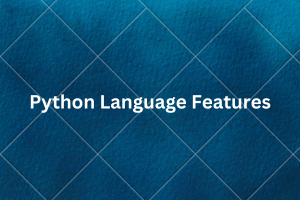In the realm of programming languages, Python has emerged as a powerhouse, celebrated for its simplicity, readability, and versatility. Created by Guido van Rossum and first released in 1991, Python has grown into one of the most popular and widely used languages, captivating developers across diverse domains. Let’s delve into the characteristics and applications that make Python an indispensable tool in the world of coding.
- Readability and Simplicity: The Pythonic Way: Python’s syntax is renowned for its readability and simplicity. The language emphasizes the use of whitespace to structure code blocks, making it easily comprehensible even for beginners. This readability not only enhances collaboration among developers but also accelerates the learning curve for those new to programming.
- Versatility Across Domains: From Web Development to Data Science: Python’s versatility is a key factor in its widespread adoption. Whether you’re delving into web development with frameworks like Django or Flask, working on data analysis and machine learning with libraries such as NumPy, Pandas, and TensorFlow, or automating tasks with scripting, Python provides a seamless and efficient platform.
- Community and Ecosystem: Thriving and Supportive: The Python community is vibrant and supportive, fostering collaboration and knowledge-sharing. The vast ecosystem of libraries and frameworks available through the Python Package Index (PyPI) allows developers to leverage existing solutions, accelerating development and reducing the need to reinvent the wheel. This wealth of resources contributes to Python’s status as a go-to language for a myriad of applications.
- Cross-Platform Compatibility: Code Once, Run Anywhere: Python’s cross-platform compatibility is a testament to its design philosophy. Code written in Python can seamlessly run on various operating systems without modification. This characteristic simplifies deployment and reduces the complexities associated with managing different platforms, enhancing the portability of Python applications.
- Rapid Prototyping and Development: Boosting Productivity: Python’s dynamic typing and interpreted nature facilitate rapid prototyping and development. Developers can quickly iterate through ideas, test concepts, and refine their code, contributing to increased productivity. The language’s ease of use allows for a focus on solving problems rather than wrestling with intricate syntax.
- Community-Driven Frameworks and Libraries: Powering Innovation: The availability of powerful frameworks and libraries in Python has significantly contributed to its dominance. From web frameworks like Django and Flask to scientific computing libraries such as SciPy and sci-kit-learn, the Python ecosystem empowers developers to address a wide spectrum of challenges efficiently.
- Educational Accessibility: Bridging the Learning Gap: Python’s readability and simplicity make it an ideal choice for educational purposes. It serves as a gateway for aspiring programmers, offering a gentle introduction to coding concepts. The educational community widely embraces Python, contributing to its growing popularity among learners of all ages.
Conclusion: Python’s Enduring Legacy
In conclusion, Python’s enduring legacy in the world of programming is a testament to its adaptability and user-friendly design. Whether you are a seasoned developer or a newcomer to coding, Python offers a welcoming and powerful environment for turning ideas into reality. As technology continues to evolve, Python stands resilient, evolving with the times and remaining a language of choice for innovation and problem-solving in the ever-expanding landscape of software development.




